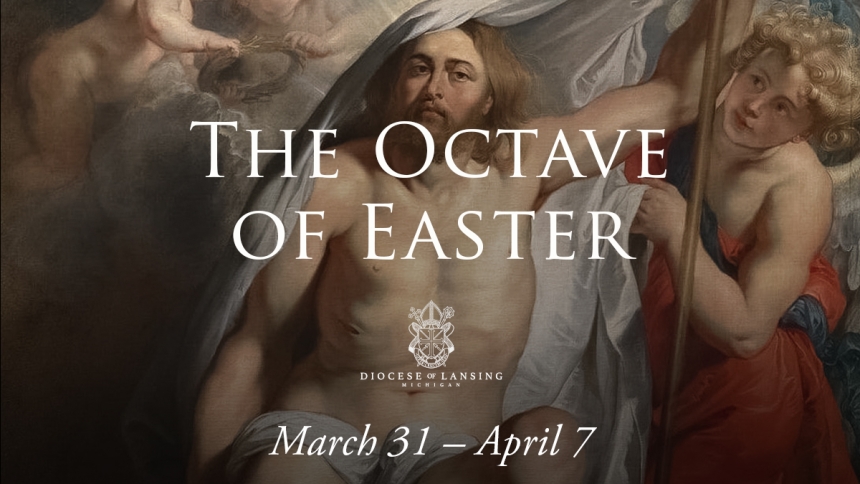
Easter is a one day festivity. Right? Wrong. In fact, Eastertide lasts for 50 days through until the Solemnity of Pentecost. Meanwhile, the eight days from Easter Sunday, inclusive, forms one octave during which every day is a solemnity. That is, the highest rank of feast day. That's why the Easter Octave is "eight days of joy" writes Jeremy Priest, Director of the Office of Worship of the Diocese of Lansing. Jeremy writes:
With the black clouds of Christ’s cold tomb surrounding him, the priest lights the Paschal Fire with these words: “May the light of Christ rising in glory dispel the darkness of our hearts and minds.” That Light continues to dispel the darkness of our hearts and minds long after the Sunday sun has set. Easter is not just a single day of rejoicing but a grand symphony, echoing through eight glorious days.
Each of the eight days from Easter Sunday to and including the Second Sunday of Easter (Divine Mercy Sunday) are celebrated as if each day was Easter—from March 31st to April 7th, this year. An octave is festival of eight days in duration that begins on a the feast day and through the next six days within the octave and culminating on the eighth day. There are currently two octave festivals in the Church calendar, Easter and Christmas (see General Norms for the Liturgical Year and the Calendar 12). So, the Easter Octave is like a plant that has grown throughout the Lenten season and flowers on Easter and comes to full bloom on its eighth day, Divine Mercy Sunday, when the Light of Christ spreads especially to those who have yet to see him (read: Thomas) — of course this is just an analogy… and Easter goes for 50 days!
So, for the eight days of the Easter Octave the Church prays like it’s Easter Sunday all over again: the Easter Candle is kept burning all week; the Gloria is sung at every Mass; the Easter Sequence (Victimae Paschali Laudes) can be sung at Mass every day; the Liturgy of the Hours repeats its prayers as if it were Easter Sunday. All of the “antiphons…and other chants…and various prayers” that the Church gives us during Easter and the Easter Octave are meant to remind us “that the Lord has bought [us] with a great price, that He has led [us] into a new country, a land flowing with milk and honey, and [we] have become a new people, populus acquisitionis, a people purchased by God Himself, His own people, called from the shadow of darkness to the fullness of light” (The Year’s Liturgy, Volume One, by Fernand Cabrol, OSB, 1938). As the Catholic writer Jennifer Miller puts it, “Of course we cannot comprehend the fullness of this great Easter mystery in our lifetime, but we are given Easter in eight days to slowly take in the marvels God has done!” So, let us join together in celebration, let us lift our voices in praise, and let us rejoice in the wondrous miracle of Christ’s victory over sin and death. For in Christ’s resurrection, we find hope, we find joy, and we find the Life that is without end.
In Christ,
Jeremy J. Priest, STL
Chair, Department of Discipleship Formation
Director, Office of Worship
Diocese of Lansing
